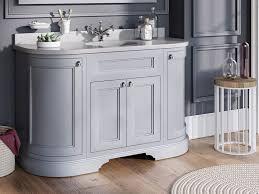How to Choose the Perfect Bath Vanity for Your Bathroom Remode

When remodeling a bathroom, one of the most important decisions you’ll make is choosing the right vanity. A bath vanity is more than just a piece of furniture—it sets the tone for your bathroom’s style, provides essential storage, and houses the sink and plumbing fixtures. The right choice can elevate your bathroom’s functionality and aesthetic, while the wrong one can cause daily frustration. With so many options available in 2025, selecting the perfect bath vanity requires careful consideration of design, size, materials, and features. Here’s a step-by-step guide to help you make the best decision for your remodel.
1. Consider Your Bathroom Layout and Size
The first step in choosing a vanity is evaluating your bathroom’s layout. Measure the available space and decide where the vanity will fit without obstructing traffic flow or other fixtures. For smaller bathrooms, a compact vanity or wall-mounted option may be ideal, while larger bathrooms can accommodate double-sink vanities or extended countertops. Don’t forget to factor in door swings, shower enclosures, and clearance space for drawers or cabinets to open fully. A vanity that fits your bathroom’s proportions will feel intentional and balanced.
2. Decide on Single vs. Double Sink
One of the biggest choices you’ll face is whether to install a single or double sink. Single-sink vanities are ideal for smaller bathrooms or powder rooms where space is limited. Double-sink vanities, on the other hand, are popular in master bathrooms, providing convenience for couples or families. Keep in mind that double sinks require more plumbing and counter space, so ensure your bathroom can accommodate them comfortably before committing.
3. Choose a Style That Matches Your Vision
Your vanity should reflect the overall design of your bathroom. Modern bathrooms often feature sleek, floating vanities with clean lines and minimal hardware. Traditional styles lean toward furniture-like vanities with ornate details, legs, and decorative molding. Transitional styles blend both, offering timeless appeal. Consider how your vanity will complement other elements like tile, lighting, and mirrors. In 2025, trends include warm natural wood finishes, matte tones, and minimalist designs that emphasize functionality without sacrificing elegance.
4. Focus on Storage Needs
A bath vanity should not only look great but also provide practical storage. Think about your daily routine—do you need deep drawers for hair dryers and styling tools, or more cabinet space for towels and cleaning supplies? Drawer organizers, pull-out shelves, and hidden compartments can make your vanity more efficient. For smaller bathrooms, vertical storage solutions maximize space while keeping clutter off the counter. The right balance of open shelving and closed storage helps maintain both functionality and aesthetics.
5. Select Durable Materials
Bathrooms are high-moisture environments, so choosing durable, water-resistant materials is essential. Popular vanity materials include:
-
Solid wood – Strong and timeless but requires proper sealing to prevent warping.
-
Plywood – A cost-effective alternative that resists moisture better than particle board.
-
MDF (Medium-Density Fiberboard) – Smooth and affordable, often used with veneers, but less durable if not sealed properly.
-
Metal or glass – Stylish and modern, though typically used in contemporary designs.
Countertops also play a role in durability and style. Quartz and granite are low-maintenance and long-lasting, while marble offers elegance but requires more upkeep. For budget-friendly options, solid surface materials and laminate are widely available.
6. Pay Attention to Sink and Faucet Compatibility
The type of sink you choose will influence your vanity design. Options include undermount, vessel, drop-in, or integrated sinks. Vessel sinks make a bold style statement, while undermount sinks provide a seamless, easy-to-clean surface. Be sure the vanity you select is compatible with your preferred sink style. Similarly, faucet placement—whether wall-mounted or countertop-mounted—should align with your vanity’s configuration. Checking compatibility early prevents costly adjustments later.
7. Think About Height and Comfort
Standard vanity height is usually around 32 to 36 inches, but comfort varies depending on the users. Taller homeowners often prefer higher vanities for ergonomic ease, while families with children may benefit from lower options. Floating vanities offer flexibility, as their installation height can be adjusted to suit your needs. Consider how comfortable the vanity will be for daily tasks like brushing teeth, washing hands, or applying makeup.
8. Factor in Lighting and Mirrors
A vanity doesn’t stand alone—it works in harmony with lighting and mirrors. Good lighting around the vanity is crucial for grooming tasks, while mirrors enhance both functionality and style. Frameless mirrors complement modern vanities, while framed options suit traditional designs. Many homeowners in 2025 are opting for backlit mirrors or medicine cabinets with built-in lighting to add convenience and a touch of luxury. Make sure your chosen vanity allows enough wall space for these additions.
9. Set a Realistic Budget
Vanities come in a wide range of price points, from affordable stock options to high-end custom pieces. Set a budget early and prioritize what matters most—whether it’s materials, size, or design details. Stock vanities are cost-effective and readily available, while semi-custom and custom vanities allow more flexibility in style and layout. Remember to factor in installation costs, plumbing adjustments, and countertop expenses when setting your budget.
10. Work With Trusted Professionals
Finally, don’t overlook the importance of professional advice. A designer or contractor can help you choose a vanity that fits your space, style, and budget while avoiding common pitfalls. They can also guide you through plumbing considerations, installation requirements, and long-term maintenance. Professional input ensures your vanity not only looks beautiful but also functions seamlessly within your remodeled bathroom.
Final Thoughts
Choosing the perfect bath vanity Burlington for your remodel involves balancing style, functionality, and durability. By considering your bathroom’s layout, storage needs, materials, and design preferences, you can select a vanity that enhances both the beauty and practicality of the space. Whether you opt for a sleek floating design or a traditional furniture-style piece, the right vanity will transform your bathroom into a space that feels organized, comfortable, and uniquely yours. With careful planning and professional guidance, your new vanity will serve as a stylish centerpiece and a long-lasting investment in your home.
- Marketing & Social Media
- AI & Digital Tools
- Science & Innovation
- Business & Finance
- Education & Learning
- Technology & Gadgets
- Family & Relationships
- Parenting & Kids
- Fashion & Beauty
- Travel & Culture
- News & Politics
- ቤት
- Literature
- Music
- Networking
- Other
- Party
- Religion
- Shopping
- Sports
- Theater
- Wellness
- Art
- Causes
- Crafts
- Dance
- Drinks
- Film
- Fitness
- Food
- Gardening
- Health
- ጨዋታዎች



